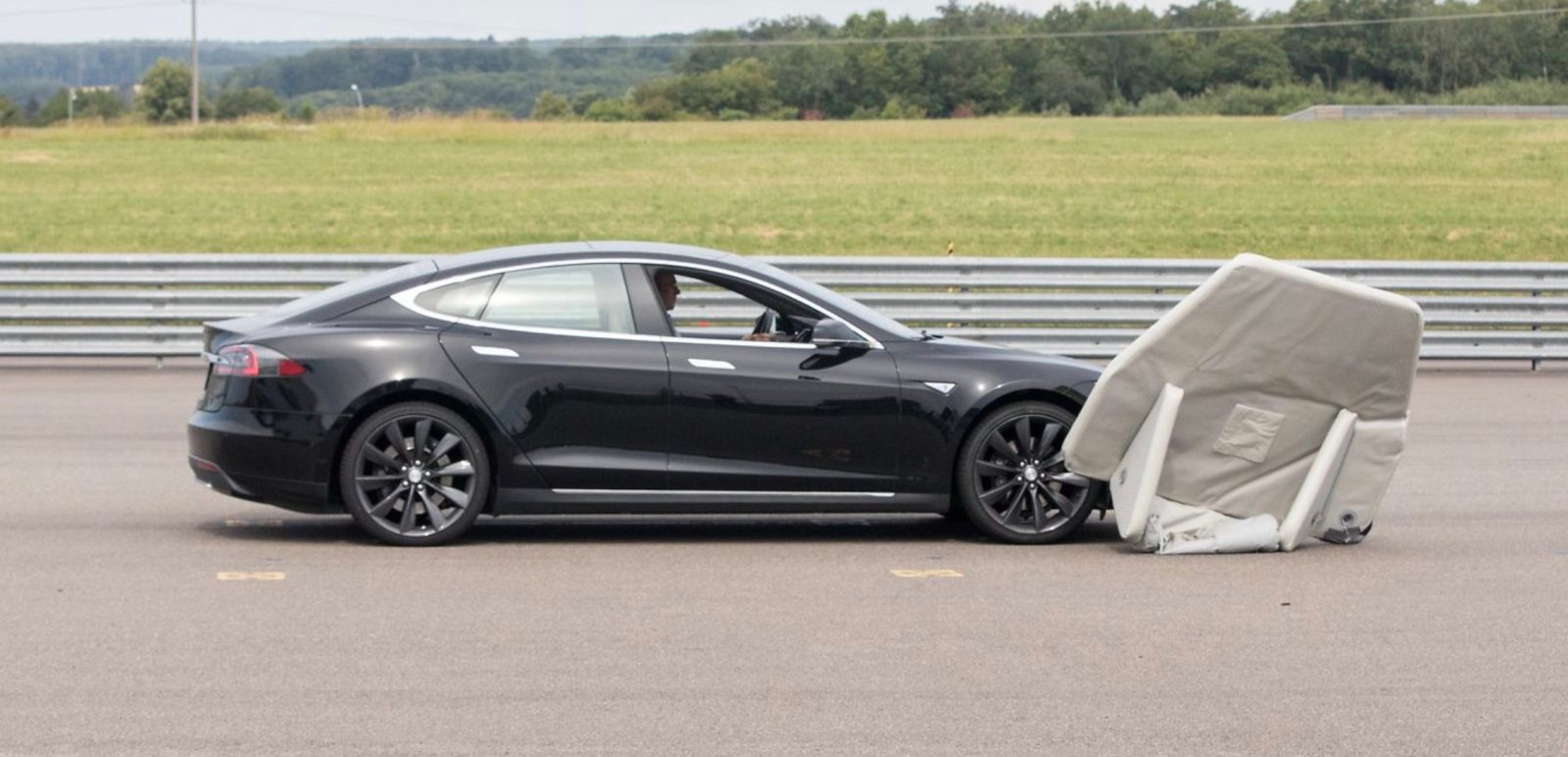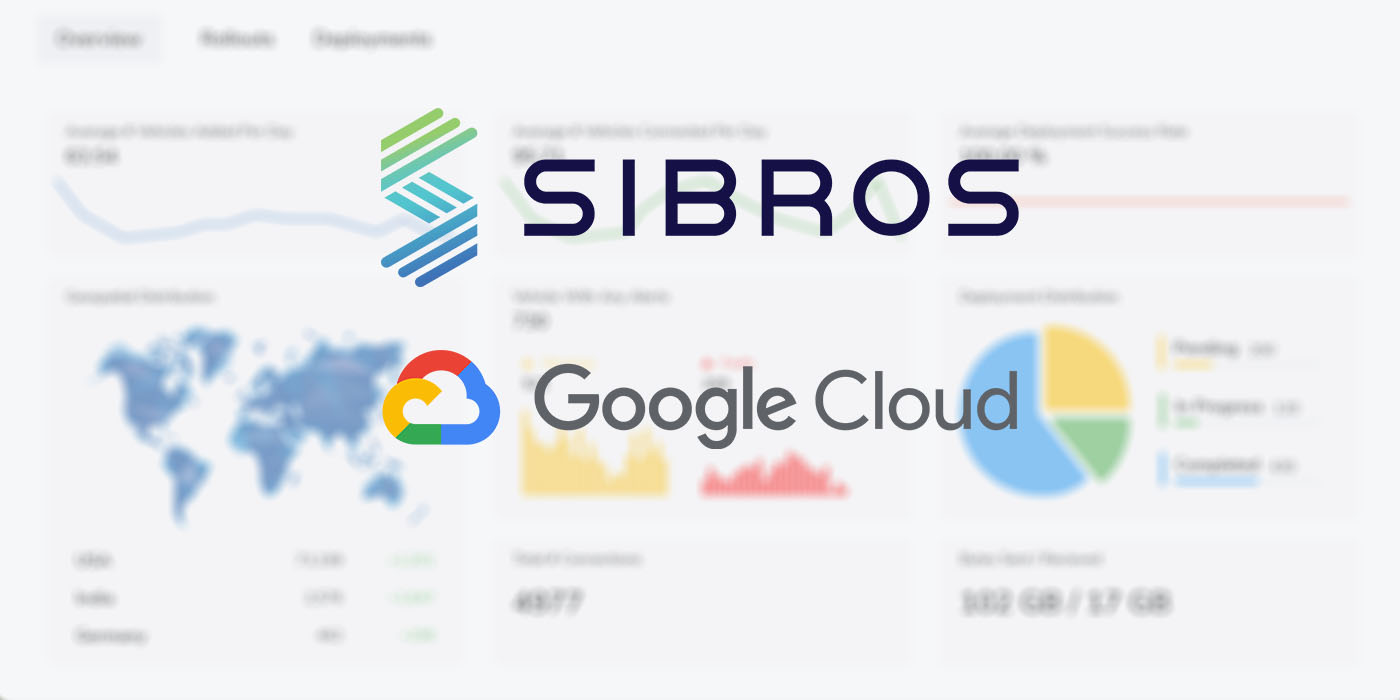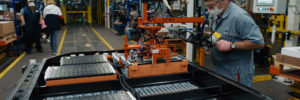It’s based on the DUALTRON X2 and features solid gold components.
Source: Electric Vehicle News
Day: August 30, 2022
Tesla faces class-action lawsuit over Autopilot’s phantom braking problem

Tesla is facing a new proposed class-action lawsuit over the phantom braking problem that has been plaguing Autopilot for years now.
The post Tesla faces class-action lawsuit over Autopilot’s phantom braking problem appeared first on Electrek.
Source: Charge Forward
US: xEV Share Out Of Total Vehicle Production Doubled In 2021
Plug-in car production significantly accelerated in recent years.
Source: Electric Vehicle News
GM CEO Barra Talks EV Future, Doesn't Reiterate Being No. 1 By 2025
When asked if she stands behind her goal of GM being No. 1 by 2025, Barra said GM will have 1 million EV units in North America alone.
Source: Electric Vehicle News
Sibros and Google Cloud team up to deliver OTA updates, AI, and real-time data to a wide range of EVs

Connected vehicle system developer Sibros has added a new partner to its Rolodex. This time it isn’t an automaker but Google Cloud. By adding Google’s advanced scalable data infrastructure, Sibros looks to bolster its connected vehicle management technology to support a number of data-driven functions to its EV customers, like fleet management and OTA updates.
The post Sibros and Google Cloud team up to deliver OTA updates, AI, and real-time data to a wide range of EVs appeared first on Electrek.
Source: Charge Forward
After climate bill passes, automakers race to make EV batteries in the US
Just two weeks after President Biden signed the Inflation Reduction Act (also known as the climate bill) into law, we are already seeing the positive effects ripple through the US economy. Global automakers are racing to source and assemble EV components in the US as new tax incentives from the climate bill expect to drive significant demand for electric vehicles.
The post After climate bill passes, automakers race to make EV batteries in the US appeared first on Electrek.
Source: Charge Forward
Blix unveils 80-mile-range ‘Dubbel’ electric bike to carry your friends, pets, and cargo

Blix has just launched a new cargo-friendly electric bicycle known as the Dubbel. It’s not just fun to say; it also looks like a fun ride with a long rear rack to carry your friends, kids, pets, or cargo on back.
The post Blix unveils 80-mile-range ‘Dubbel’ electric bike to carry your friends, pets, and cargo appeared first on Electrek.
Source: Charge Forward
Polestar 2 Battery Replacement Far Exceeds Car’s Price In China
The owner of one Polestar 2 in China was quoted the equivalent of $79,200 for a new battery pack.
Source: Electric Vehicle News
Duke Energy tests EV batteries as grid resource in Florida lab
Florida utility Duke Energy is testing the V2G features of the new Ford F-150 Lightning at the company’s Energy Wise Lab in St Petersburg, Florida (the home of Charged).
The R&D pilot will evaluate the viability of the Lightning’s high-capacity batteries and two-way charging capability as a way to power Florida homes during outages and help support the state’s electrical grid.
Several of the new generation of EVs going on sale in the US this year will also feature bidirectional charging. Duke says it chose the Lightning for its pilot program because it’s the first EV to market with a battery large enough to provide vehicle-to-home and vehicle-to-grid capabilities. The pilot will use the Ford Charge Station Pro and Intelligent Backup Power Home Integration System.
Lon Huber, Duke Senior VP of Customer Solutions, said that Ford has been very helpful with the pilot program, providing vehicles, hardware and software not yet available to the public.
Facilities at the St Pete lab allow Duke’s engineers to simulate three home environments simultaneously, and gauge the effects on the truck’s batteries over time.
“We always look for opportunities to maximize the value of new technology out there,” said Lon Huber, Duke Senior VP of Customer Solutions. “And we said, ‘wow, this is going to be a very large battery that, for the most part, is going to sit there idle.’”
After the initial lab testing phase, Duke will assess the Lightning’s capabilities in connection with customer-owned energy resources such as solar panels. The goal is to see how the vehicle-to-home and solar systems would integrate, and if they could power an entire home during extended outages. Huber believes testing will demonstrate synergies between the two—the testing will focus on whether the electric truck can effectively back up a solar-powered home.
Huber noted the importance of ensuring that EVs recharge at optimal times, avoiding periods of peak demand. Entire neighborhoods charging in an orchestrated way could minimize costs. “On the grid side, we want to make sure that we actually dispatch the battery capability to maximize benefits when the grid needs it the most,” said Huber. “All in a coordinated way.”
Ford claims its Intelligent Backup Power System, introduced with the Lightning, allows the truck to power a home for up three days. The hardware needed to power a home using the Lightning’s battery is now available to the public. However, consumers will have to wait until next year for the required vehicle software updates.
Huber pointed out that EV drivers stand to save substantial amounts of money compared to fueling a legacy vehicle, and added that Duke offers special rates for charging EVs.
In fact, Duke has done almost nothing to publicize its Off-Peak Charging Credit offering, and when we investigated, we found the existing program to be so complex, and the benefits so minimal, that it was hardly worth signing up for (and we couldn’t sign up anyway, as the web site said the program was “currently full”). However, if Duke can establish that offering a more robust program would benefit Duke, this could change in the future.
Huber said that if the current pilot is successful, Duke would move towards creating a larger-scale V2X program. “While [a driver is] not using their truck, it is literally making money for them while it’s sitting in the garage,” said he. “What a great way to partner with our customers to create value for everybody.”
Source: St Pete Catalyst
Source: Electric Vehicles Magazine
Ford cuts 3,000 jobs, citing shift to EVs
Many have predicted that the shift to EVs will lead to job losses in the automotive industries, as EVs are simpler to assemble than legacy vehicles. The latest news from Ford appears to bear out this inconvenient truth—the automaker has announced that it will cut a total of 3,000 salaried and contract jobs, mostly in North America and India.
Reuters reports that Ford Chief Executive Jim Farley has been saying for some time that the company has too many people, and that not enough of its workforce had the skills required for the transition to EVs and digital services.
“We are eliminating work, as well as reorganizing and simplifying functions throughout the business,” Farley and Ford Chairman Bill Ford wrote in a recent joint email to employees. “You will hear more specifics from the leaders of your area of the business later this week.”
Farley and Ford also wrote that the company’s cost structure “is uncompetitive versus traditional and new competitors.” This echoes language used by former VW CEO Herbert Diess some months ago, when he noted that Tesla’s cost to assemble a Model 3 at its German Gigafactory was a fraction of what it cost VW to produce an ID.3. (Hopefully Mr. Farley will not also meet the fate Mr. Diess suffered for speaking truth to power.)
Source: Reuters
Source: Electric Vehicles Magazine



